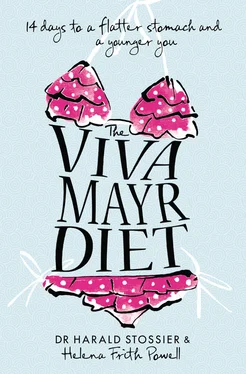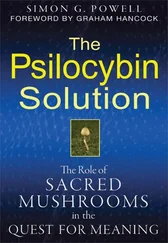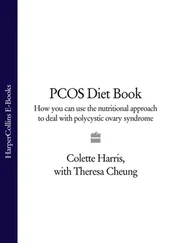Your essential shopping list
Over the next 14 days, you’ll need the following foods in your store cupboard and fridge. Most of the recipesare designed to serve about four, so if you are cooking for your family, this is probably ideal; however, if you are going solo, you will need to purchase smaller quantities of the ingredients. Read through the recipes before heading off to the shops, so you know what you’ll need. It’s also a good idea to purchase your fresh fruit, vegetables and herbs daily (if possible), and, unless you have a very good deep-freezer, your meat and fish, as well.
Green tea
Pomegranate juice
Spring water
Stevia
Vegetable stock cubes, organic
Rock salt
Extra-virgin olive oil
Cold-pressed linseed oil
Cold-pressed hemp oil
Cold-pressed walnut oil
Cold-pressed pumpkin-seed oil
Coconut oil
Truffle oil (optional)
Balsamic vinegar
Honey
Maple syrup
Cider vinegar
Blackcurrant purée
Baking powder
Cream of tartar
Organic soya sauce
Raisins or sultanas
Green olives
Black olives
Dried fruit, such as apricots and prunes
Organic eggs
Butter
Soft goat’s cheese
Soft sheep’s cheese
Sour cream
Soya milk
Single cream
Double cream
Parmesan cheese
Cottage cheese
Rice milk
Oat milk
Live sheep’s, goat’s or cow’s milk yoghurt (avoid the latter if you have any allergies or intolerance to milk, milk proteins or lactose)
Goat’s milk or sheep’s milk (full-fat cow’s milk is OK, if you have no allergies)
Apples
Berries (such as strawberries, raspberries, blackberries, blueberries; whatever you can get)
Pomegranates
Oranges
Lemons
Limes
Bananas
Papaya
Mangoes
Spinach
Onions
Radishes
Celery
Carrots
Fennel
Potatoes
Kohlrabi
Ripe vine tomatoes
Baby plum tomatoes
Pumpkin or butternut squash
Salad (various lettuce leaves; anything goes)
Garden cress
Mixed sprouts, such as fenu greek, alfalfa, mung bean, radish, soya
Courgettes
Parsnips
Avocados
Artichokes (globe)
Broccoli
Celeriac
Rocket
Aubergines
Turnip
Shallots
Fresh beetroot
Fresh horseradish (or shop-bought horseradish sauce)
As well as any fruits and vegetables in season …
Fish & meat and meat substitutes
Trout fillets
Smoked trout fillets
Skinless, boneless turkey breasts
Slices of turkey ham
Loin of lamb
Salmon fillets
Slices of smoked salmon
Fillet of beef
Organic silken tofu (or hemp tofu if you can get it)
Char caviar
Grains, pulses, nuts and seeds
Walnuts
Pumpkin seeds
Almonds
Whole linseeds
Chickpeas (dried)
Sesame seeds
Amaranth seeds
Ground oats
Buckwheat flour
Millet
Corn flakes
Spelt flour
Rice flakes
Soya flour
Polenta
Potato flour (an Italian deli should sell this)
Risotto rice
Note: some of the dried herbs can be found at your local health-food shop
Fresh ginger
Fresh lemon verbena
Fresh dill
Fresh chervil
Fresh tarragon
Fresh lovage
Fresh coriander
Fresh thyme
Fresh rosemary stalks
Fresh marjoram
Fresh mint
Fresh parsley
Fresh or dried fennel
Fresh lemongrass
Fresh basil
Cinnamon sticks
Ground cloves
Ground ginger
Ground cinnamon
Nutmeg
Vermouth
Dried caraway seeds
Dried yarrow
Dried horsetail
Dried birch leaves
You may also want to consider getting some crystals to energise and purify your water; rose quartz is a great choice, if you can get it.
So no doughnuts and no deep-fried Mars bars – funny that. If the list looks sadly lacking in sugar hits, just remember that your taste buds will change in a few days and you will no longer crave all those sweet things. You are perfectly capable of living without them, and you will start to feel and look better very quickly as a result of eating the kinds of foods listed above, which actually have some nutritional value.
It’s perfectly acceptable to create your own meals rather than following the suggested menu plans, although you may want to try them for a few days first, to get the hang of the way food is prepared at Viva Mayr. Here, you’ll find hints for cooking the Viva Mayr way, and a little later in this section you’ll find out what foods you need, and why you should be eating them. By all means experiment with the foods listed above, or choose some of your own. The key words are fresh, organic (if possible), varied and whole. So get plenty of different whole grains, fresh, brightly coloured fruits and vegetables, a little fresh, lean meat and fish, some good-quality seeds and nuts, plenty of fresh herbs, organic eggs and some dairy – sheep and goat’s, if you can; otherwise, cow’s milk dairy produce will be fine, too. The most important things you can and should purchase are cold-pressed oils, which feature every single day on the Viva Mayr Diet (see here).
When I ask Dr Stossier what type of sugar is best for us to eat, he is very firm when he responds.
‘No sugar – that’s the best sugar you can have.’
But that’s totally and utterly impossible. How can anyone possibly live without sugar? I mean, even if you wanted to, how could you avoid it? Is there such a thing as sugar-free shortbread biscuits?
‘I know it’s difficult,’ he concedes, ‘but the fact is that you don’t need any more sugar than you get from the food you already eat. We get so many different forms of carbohydrates that it is not necessary to add more.’
I ask him if brown sugar is better. Apparently it is not. How irritating is that? I have spent the last 20 years taking brown sugar lumps instead of white ones because I think they are healthier. I don’t even have any white sugar in the house; I do everything with brown sugar, even baking – which is not easy if you’re trying to bake a white fluffy sponge.
‘Brown sugar is very often only white sugar that has been coloured brown to give it the appearance of natural, healthy sugar,’ explains the doctor. ‘In fact, natural sugar wouldn’t even taste like sugar. If you have a sweet tooth then use the plant Stevia instead.’
I have tried Stevia in its raw form and also in a chocolate mousse. It is delicious and sweet enough for anyone. You can buy it online or in health-food shops. But be aware that a craving for sweet things is a sign that your cells are asking for sugar because they need energy to digest your food. This means you have not given your body the best chance to digest, and is not good news. You are either eating the wrong thing at the wrong time, not chewing enough (see here), eating too much protein (see here) or eating when you are stressed (see here).
Fruit is a better option than sugar. Instead of sugar, sprinkle fruit on your cereal. An ideal breakfast would be muesli and some fruit followed by eggs (preferably not fried, sadly, which will upset my daughter who likes nothing better than to start the day with one or even two fried eggs), and some raw vegetables. While I was at the Viva Mayr Clinic, I had an avocado with linseed oil for breakfast – surprisingly delicious and one of the most nutritious ways to start the day. But if you can’t imagine going on without your daily fix of doughnuts, Mars bars or fizzy drinks, please do me a favour and just give it three days; that’s all it will take to break your nasty habits, for your taste buds to mellow, and for those things to seem like sugary, unhealthy and fattening blasts from the past.
Читать дальше









